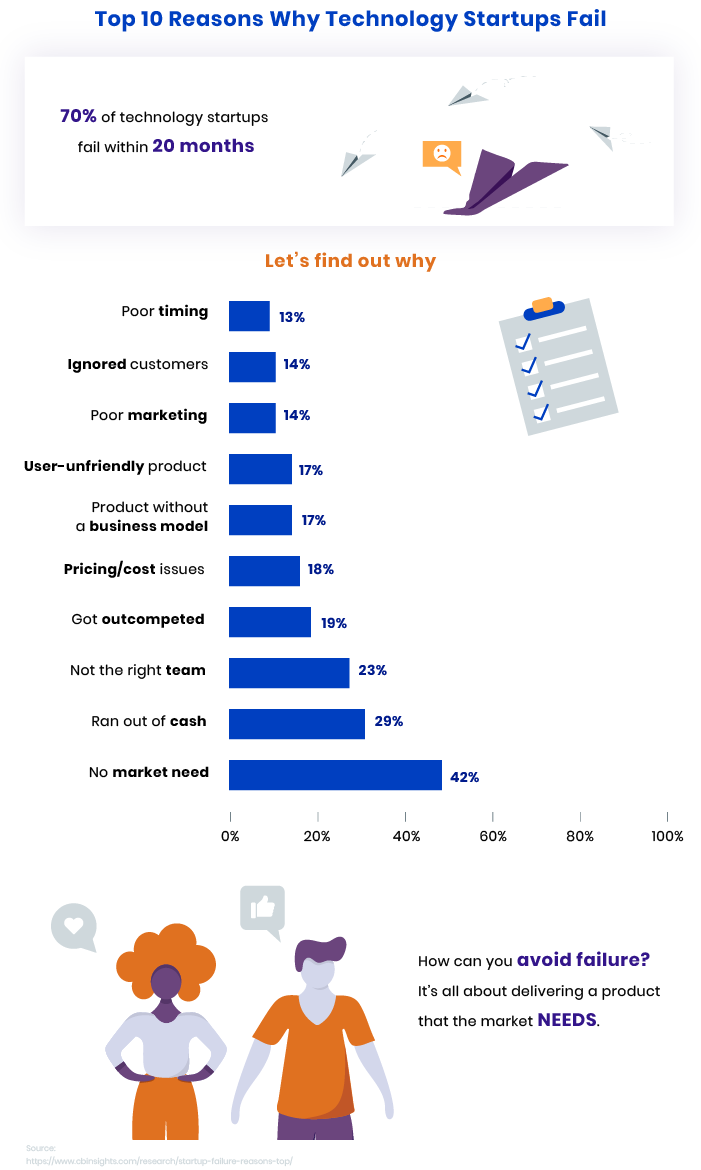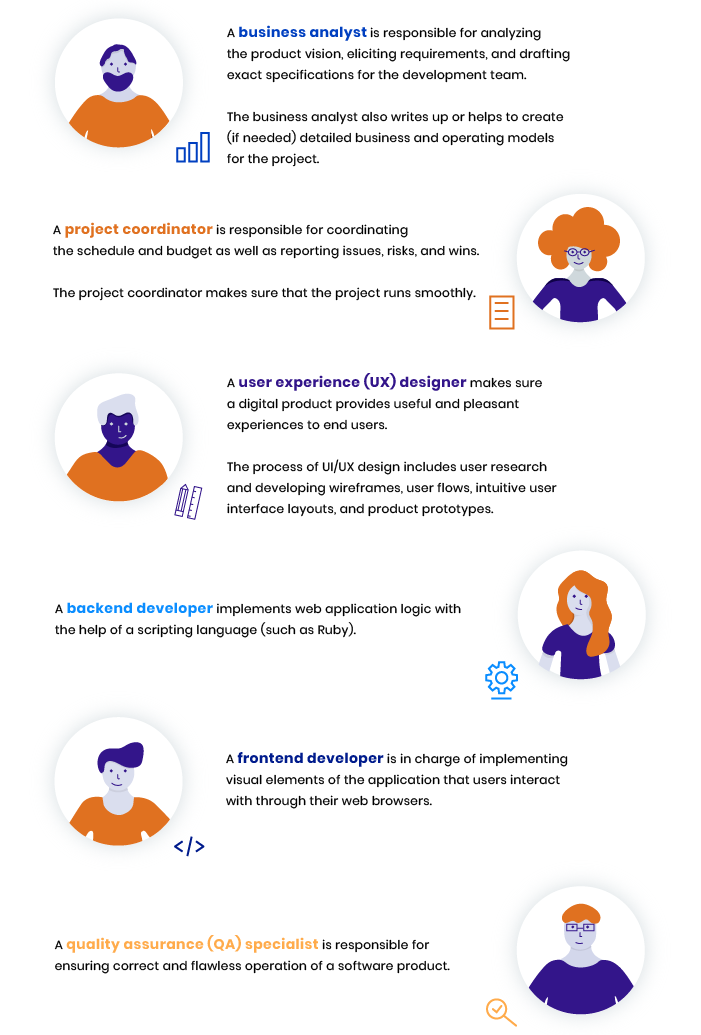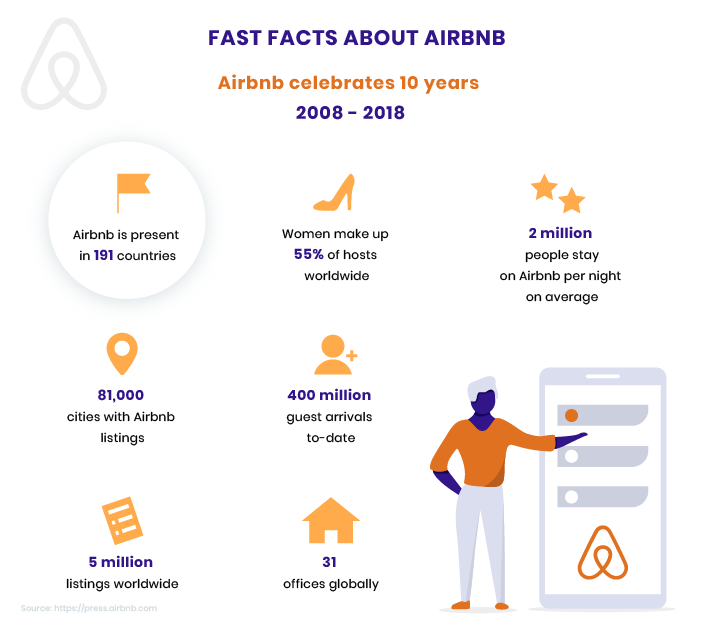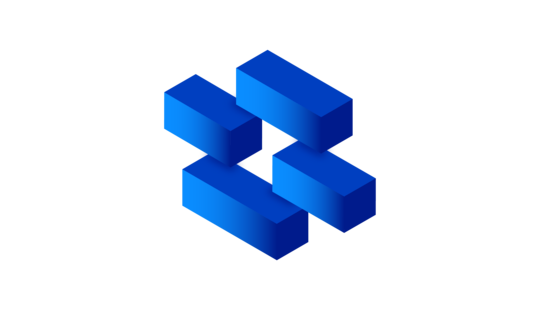-
Product Management
Software Testing
Technology Consulting
-
Multi-Vendor Marketplace
Online StoreCreate an online store with unique design and features at minimal cost using our MarketAge solutionCustom MarketplaceGet a unique, scalable, and cost-effective online marketplace with minimum time to marketTelemedicine SoftwareGet a cost-efficient, HIPAA-compliant telemedicine solution tailored to your facility's requirementsChat AppGet a customizable chat solution to connect users across multiple apps and platformsCustom Booking SystemImprove your business operations and expand to new markets with our appointment booking solutionVideo ConferencingAdjust our video conferencing solution for your business needsFor EnterpriseScale, automate, and improve business processes in your enterprise with our custom software solutionsFor StartupsTurn your startup ideas into viable, value-driven, and commercially successful software solutions -
-
- Case Studies
- Blog
How and Why We Evaluate Our Clients' Business Ideas
Becoming a unicorn is probably the ultimate goal for most technology startups.
Yet statistics by CB Insights say that over two-thirds of technology startups fail within just 20 months. And the major reason behind this appalling failure rate is no market need. In other words, businesses spend money, time, and effort building software products that no one needs. Development teams, in turn, work hard on rolling out software that ends in failure.
Needless to say, both business owners and development teams are interested in launching software products that help their target audiences solve specific problems. And the best way to achieve this goal is to carry out a thorough startup idea evaluation in order to elaborate a viable product design and development strategy.
In this article, we explain why evaluating the business idea of a technology startup is a crucial step for a development team. We also share our own experience by showing what kind of information our RubyGarage team requires to begin working on a startup project and how we collect this data from our clients.

Why evaluating a startup business idea is crucial for a software development team
Evaluating a business idea of a technology startup is vital not only for a business owner but also for the development team in charge of turning the startup idea into a real-life software product. Often, startuppers want to move right on to defining functionality of their application and don’t recognize the importance of explaining their business model to their development team.
But that’s not how things should be done in software development. A startupper and a development team need to be on the same page and share the same understanding of what kind of problem they’re solving for end users. Such a close collaboration is the cornerstone of a project’s success.
Let’s go through the main reasons why evaluating a business idea is the first step a development team needs to take when they begin a startup project:
Reason #1: To get a full vision of the startup idea
The business model gives a development team full information about a startup without going too deep into detail. If the team understands exactly what they’re working on, they’re able to deliver a better software product. Startup idea evaluation gives the team a complete vision of the project and helps take correct technology and design decisions.
Reason #2: To identify potential soft spots in the startup idea
Business owners give their startup ideas a good deal of thought, but faulty assumptions are always possible. Two eyes see better than one, so even if you’ve spent months refining your idea and everything seems fail-proof, it’s still best to have a development team evaluate your business idea and give unbiased feedback. There’s no point staying quiet about soft spots in a technology startup, as delivering a software product that fails after release makes no sense for either the business owner or the software development company.
Reason #3: To develop a relevant software development strategy
Having a complete understanding of your startup’s business model allows a development team to ensure that software solutions are in line with your main business values. The business model impacts the team’s approach to product design and development.
Reason #4: To deliver software that the market really needs
A product development strategy founded on business idea evaluation is a key component in delivering a software product that potential customers have a real need for. Working on a product that no one is going to use is pointless: business owners will lose money, while teams will get demotivated. Let’s be honest: most people want to see their work be successful.
How we evaluate our client’s business ideas
Let’s say that you’re a business owner and you need to describe your business idea to our development team. How can you do it? Time to find out.
You don’t need to spend several days on phone calls, share your entire business plan, or reveal entrepreneurial secrets. Our RubyGarage development team just needs to collect some key information to create and evaluate the business model of your technology startup. We ask our clients to fill out a brief form that includes ten building blocks, each of which contains one or more questions. These blocks are logically structured, and the form serves as a kind of checklist, helping our team quickly understand your startup idea.
Now it's time to meet the team responsible for developing your application. Of course, the exact size of the team depends on the scope of your project. So instead of doing a head count, we're going to mention the major roles on the team. Here are the team members who you'll need to explain your startup idea to:

Now it’s time to look at what questions we ask and why each of them matters for product design and development.
#1: Problem
Any business idea is about solving a specific problem, and a development team needs to understand what kind of problem you want to solve with your technology startup. To get this information, we ask the following questions:
- What are the critical problems faced by your customers?
The answer to this question gives the entire development team a clear vision of what problems you want to solve with the help of your software product. Moreover, based on the answer to this question, the development team can suggest their own solutions rather than working with those provided by stakeholders.
That’s a starting point for any startup, as the success of the final software product depends on how well it helps end users resolve their problems. If members of a development team don’t understand what problems your software product is designed to solve, they’re unlikely to come up with the most efficient way of building it.
Moreover, it’s important to keep in mind that customers may be solving problems by means of a single service, a combination of services, or even through basic and primitive techniques, but still these problems exist on the market. That’s why we also ask one more question:
- How can these problems be solved today?
For this and further blocks, we’re going to give examples from Airbnb, one of the most prominent unicorn startups built with Ruby on Rails. To make our analysis more relevant, we’re going to evaluate the business model of the initial business idea behind Airbnb.
Airbnb (initially called AirBed & Breakfast) was founded in 2008 by Brian Chesky, Joe Gebbia, and Nathan Blecharczyk, who came up with the idea of a web platform that offers short-term lodging.

Let’s go back to 2008 and see what the company’s business model could look like.
Example
What are the critical problems faced by your customers?
Problems for guests:
- Want to save money while traveling
- Booking a hotel room can be difficult during peak season
- Hotels separate guests from a city and its culture
- Want to get closer to the local culture
- Want to visit various destinations
Problems for hosts:
- Want to earn extra money by renting out their properties
- Want to get acquainted with new people and introduce them to local culture
How can these problems be solved today?
For guests:
- Book a room or bed with locals
- Connect to a couchsurfing community
- Book rooms in hotels which provide discounts
- Book rooms or beds in hostels
- Stay at their friends’ homes
For hosts:
- Rent out a room
- Take in couchsurfers
#2: Customer segments
The next step is to describe customers whose problems your technology startup aims to solve. Here are the questions that help our RubyGarage team get this information:
- Who is your intended audience?
- Who will be first in line to try your product?
- Why will this group want first dibs?
Defining customer segments helps our development team understand how to provide solutions to your customers’ problems. To clarify how this works, let’s go a bit deeper:
- The business analyst gets a clear vision of who the end users are (as well as how they’ll use the software product) and delivers this vision to the development team.
- The UX designer develops the most relevant user experience for end users.
- The technical team identifies the main technical criteria during the development process (i.e. selects a relevant technology stack and toolkit).
- The QA specialist associates with target customers and comes up with efficient testing scenarios.
For accurate startup idea evaluation, you should not only give a general description of your customer segments but also provide concrete portraits of your customers. The more details, the better technical solutions our development team will come up with.
Example
Who is your intended audience?
Property owners (hosts): people who own property and want to make use of their extra spaces.
- Entire place
- Private rooms
- Shared rooms
Main host segments based on Bed and Breakfast accommodation type:
Travelers (guests): Travelers looking for a local homestay at affordable prices.
- Business
- Leisure
- Visiting friends or family
- Events (conferences, sports events, festivals, etc.)
Main guest segments based on travel purpose:
Who will be first in line to try your product?
Guests:
- By purpose of travel: travelers that are going to visit events (conferences and festivals)
- By geography: travelers that visit cities across the US to attend big conferences and festivals (starting with the Democratic National Convention in Denver)
Hosts:
- By accommodation type: property owners renting out shared and private rooms
- By geography: property owners who have properties located in cities holding massive events (conferences and festivals) across the US (starting with the Democratic National Convention in Denver)
Why will this group want first dibs?
Guests will be the first in line since any large event in a city attracts lots of visitors and, as a result, leads to a shortage of hotel rooms and the necessity to find alternative places to stay. That’s exactly when private properties will be in high demand.
Property owners who are renting shared rooms and private rooms (since this is the easiest way for hosts to earn extra money and share unique experiences with guests at the same time) in cities holding massive events (conferences and festivals) across the US, as events guarantee a huge influx of visitors and high demand for rentals.
Based on geographic location, property owners who have properties in Denver and travelers that are going to visit the Democratic National Convention, which expects to attract around 80,000 visitors, will be the likely first users of the platform.
#3: Competitors
No matter what kind of software product your tech startup is going to offer, thorough analysis of competitors is a step that you should never neglect. If a business owner skips this step, they’re likely to end up launching a software product inferior to its counterparts. Needless to say, such a mishap means failure for a startupper.
To analyze competition with your startup project, our RubyGarage team asks these questions:
- Who are the main competitors on the market?
- What are the weaknesses of each competitor?
- What are the strengths of each competitor?
Competitive analysis helps the development team reveal the strengths and weaknesses of similar software products. A business analyst carries out research on rival products to understand what kind of software customers are accustomed to using, investigate if the identified problems (that the software will solve) have already been solved by any competitors, and understand the best practices on the market.
Based on this information, our business analyst evaluates the strong and weak points of competitors’ solutions and decides how to make your software product better from the technical point of view.
Example
Who are the main competitors on the market?
- Craigslist
- BedandBreakfast.com
- vrbo.com
- hostels.com
What are the weaknesses of each competitor?
Craigslist
For guests:
- Poor user interface
- Impossible to book a living space directly on the website
- No information about property availability
For hosts:
- No on-site payments (no payment guarantee)
- Guests aren’t vetted
- No availability calendar
BedandBreakfast.com
For guests:
- No testimonials or explanations of how the service works
For hosts:
- Offline transactions for booking (no payment guarantee)
- Complicated and time-consuming process of property verification and approval
vrbo.com
For guests:
- High booking fees
For hosts:
- Expensive listings
- Only offline transactions for booking (no payment guarantee)
hostels.com
For guests:
- Obligatory 10% deposit for each booking
- No testimonials or explanations about how the service works
For hosts:
- No ability to set up a host account
What are the strengths of each competitor?
BedandBreakfast.com
For guests:
- Gift cards
- Global rating of destinations
- Availability calendar
For hosts:
- Availability calendar
- Promotions for listings
- Database of vendors in the B&B industry (ability to find a vendor in a specific category)
- Efficient pay-per-click advertising
- Linking program (allows hosts to insert codes with badges on their websites to forward visitors to BedandBreakfast.com)
Craigslist
For guests:
- No registration required
- Access to direct contacts of hosts (phone number, email, etc.)
For hosts:
- Free and simple listing process
- Opportunity to advertise extra services or sell things
- Ability to advertise a listing in different categories
vrbo.com
For guests:
- Instant booking (no registration required)
- Lots of available locations worldwide
- Multiple types of properties to book (condos, apartments, etc.)
- Helpful links to travel information (guides, trends, communities, etc.)
- Availability calendar for each listed property
For hosts:
- Availability calendar
- Booking guarantees (extension of membership for 6 months if income from bookings is ten times lower than annual cost of membership)
- Helpful links for property owners (tax recommendations, professional services, communities, etc.)
- Listing attractiveness statistics (number of visitors for each listing)
- No limitations on property listings (ability to list properties in various categories like houses, condos, cabins, apartments, etc.)
hostels.com
For guests:
- Provides additional travel services (travel insurance, rail passes, adventure tours, etc.)
- Multiple geographic locations
- Localization (multi-language user interface)
- Provides helpful information about traveling (travel guides)
- Provides helpful information about hosteling culture
For hosts:
- Featured listings
- High traffic thanks to linking to over 3,000 travel websites, portals, and student sites
- Shows traffic statistics about visitors
#4: Solution
Now comes the most important building block of the business model because it describes how exactly your technology startup is going to solve your customers’ problems. To collect this information from our clients, we ask a single question:
- What are your solutions to your customers’ problems?
The business analyst uses the answer to this question to define crucial factors for building processes in the software, while the technical team uses this information to better understand the final solution and provide helpful feedback and suggestions.
Example
What are your solutions to your customers’ problems?
- Guests can save money by booking rooms with locals instead of staying at hotels.
- Hosts can earn money by renting out their living spaces.
- Guests and hosts can share culture and make connections.
#5: Unique value propositions
This block of the business model allows our development team to have a clear view of how your startup will create and deliver business value to customers. To find out how you’ll do this, our business analysis team asks the following questions:
- What value do you deliver to customers?
- How would you briefly describe what you do?
Each operation, process, or activity is aimed at delivering value to a person who performs it. The main idea of any software is to multiply the value for end users as much as possible. Understanding key value propositions is instrumental for building software, since a mismatch between key values and final technological solutions may lead to failure.
Our business analyst uses formulated unique value propositions to ensure that software components are aligned with the key values that your tech startup is going to deliver to its target audience. Unique value propositions shape your business model and play a leading role in the overall success of your software product.
Example
What value do we deliver to customers?
Value for guests:
- An authentic local experience and household amenities
- The choice among a variety of unique properties
- Lower prices than hotels
- Stay in places where there are no available hotels
- Ease of use − book in three clicks
- Transparent property ratings
Value for hosts:
- Get money from renting out living spaces
- Simple and quick listing process
- Easy to get payments for rentals
- Easy to find verified guests through profile ratings
- Meet new people
How would you briefly describe what you do?
- We let travelers book stays at affordable prices and live like locals.
#6: Channels
When you’re about to launch a startup, you need to decide how to make it reach your target customers or, in other words, come up with an effective marketing strategy. The following question helps our RubyGarage team collect information about marketing channels:
- Through which channels do your customer segments want to be reached?
Knowing channels through which you can reach your target audience plays a major role in business idea evaluation and subsequent software product development. A business analyst uses this information to come up with the most effective way to reach each type of customer as well as receive feedback about a digital product.
Moreover, channels help our development team decide if a software product needs to be integrated with a specific marketing service and if this service needs to be included in the MVP scope.
Example
Through which channels do our customer segments want to be reached?
- Digital ad campaigns
- Organic traffic
- Promotional offers
- Word of mouth
- Social media
#7: Unfair advantages
This building block identifies advantages of your tech startup compared to competitors. These are your strong points that should be unique and difficult for your rivals to copy. If your technology startup becomes a roaring success, your competitors are likely to follow suit and try to outperform you. Therefore, any technology startup needs to have some aces up its sleeve, and to find out what they are, our RubyGarage team asks our clients a simple question:
- What are some assets you possess that can’t easily be copied or acquired by other businesses?
Understanding unfair advantages helps our development team define what levers should be used in a software product so that it can achieve a strong position on the market. Our business analysts use this information to suggest software components or functionality that the development team should put maximum emphasis on.
Example
What are some assets you possess that can’t be easily copied or acquired by other businesses?
- Catchy brand name
- First to market for a transaction-based temporary housing site
- Inspiring founding story
#8: Revenue streams
Businesses operate to make money, so defining a revenue structure is a vital part of startup idea evaluation. It helps you devise a relevant pricing model and prioritize investments. Here are a couple of questions that help our team get a clear view of how our clients’ startups intend to make money:
- How will you generate income?
- How would your customers prefer to pay?
This information about revenue streams allows our business analyst to carry out thorough research and determine whether the cost of developing a software product is higher than what the target customers are willing to pay for it and if launching the product makes sense from the financial point of view.
Example
How will you generate income?
- 10% commission on each transaction
How would your customers prefer to pay?
- Online payments through credit cards or PayPal
#9: Cost structure
Just like traditional businesses, technology startups bear operating costs, so identifying a cost structure is a necessary stage of evaluating a business idea. A business analyst uses the cost structure for roadmap planning as well as MVP planning if cost plays a key role in a project.
Moreover, our business analysts can investigate the current cost structure and suggest ways to optimize it (for example, they can propose implementing a different web services structure, integrating alternative paid services, or streamlining expensive processes to save costs).
Here’s the question our team asks to obtain core information about your tech startup’s cost structure:
- What are the expected costs to run your business (fixed and variable)?
Example
What are the expected costs to run your business (fixed and variable)?
Fixed costs:
- Customer support
- Payments to contractors
- Technological infrastructure
- Taxes
- Legal fees
- Web application development and maintenance
Variable costs:
- Fees to online payment processing services
- Customer acquisition, marketing campaigns (online and offline advertising)
- Expansion costs
#10: Key metrics
Business owners need to measure the success and performance of their technology startups, so their software products need to have appropriate functionality for measuring key metrics. That’s why you need to define key metrics of your startup and identify them to a development team. To get this information, we ask our clients the following question:
- Which metrics indicate how well your company is doing?
Our business analyst uses key metrics to ensure that solutions match your business needs. This information is also vital for developing ways that software can collect necessary data.
In other words, knowing key metrics helps a development team get a clear understanding of what data a software product needs to collect and how it can process that data. That’s the final block of our startup idea evaluation methodology.
Example
Which metrics indicate how well your company is doing?
Quantitative:
- Active community growth rates
- Annual bookings
- Number of complaints from users
Qualitative:
- User reviews
Lean canvas as the perfect tool for evaluating startup ideas
You might have guessed that the building blocks we’ve mentioned above actually make up the lean canvas − a simple and efficient tool for evaluating business ideas.
The lean canvas is an adaptation of the business model canvas for startups. It’s a simple template that requires little time to fill out and helps us easily evaluate your startup idea, revealing its core components.
Our RubyGarage team has upgraded the original lean canvas by adding a block about competitors. That’s why we use a lean canvas that has not nine but ten building blocks. Our considerable experience developing software products for technology startups proves the importance for a development team of understanding the competitive environment. This information helps us find out what UI/UX design and technology solutions are used by competitors and suggest ways to outperform them.
Here’s what the lean canvas template we use at RubyGarage looks like:

Benefits of the lean canvas for evaluating business ideas
The lean canvas is a useful and efficient tool for both business owners and development teams at the product design stage. Not only does it help to evaluate a startup idea but it also provides a number of other important benefits:
-
Speed
A traditional business plan is a lengthy and detailed document that might take weeks to compose and read. Definitely, this isn’t the optimal way to evaluate a business idea behind a technology startup.
The lean canvas for startups, in contrast, is a brief template that requires little time to fill out. Moreover, it focuses only on the key components of a business idea so a startupper and development team can easily check whether a software product really solves a problem of its target audience as efficiently as possible.
-
Transparency
The lean canvas for startups is an intuitive tool that anyone can understand. It doesn’t require any special knowledge of economics, so all stakeholders can quickly tell what each block of the lean canvas is about even if they aren’t familiar with this tool.
-
Focus
The lean canvas is focused on the core of any business idea − the problem/solution fit. The entire canvas describes how a startup will solve a specific problem of its target audience. This business idea evaluation tool helps to overcome potential uncertainty of launching a startup by providing a comprehensive business model.
-
Flexibility
Imagine how much time you’d need to update your business plan. The lean canvas for startups is different: this startup idea evaluation tool can be easily updated or scaled if need be. If a specific component of the lean canvas proves inefficient, making necessary adjustments requires little time and effort from a business owner. For these reasons, the lean canvas perfectly matches the lean software development methodology we follow at RubyGarage.
Final thoughts
Evaluating your startup idea is a starting point for every technology startup as it helps to make sure that the development team understands what they’re working on and what kind of application the startup requires.
At RubyGarage, we use the lean canvas as an intuitive and efficient business modeling tool for startups. It provides our development team with all necessary information about a startup project and allows us to deliver successful software products with real market value.
If you have a great startup idea, tell us about it and our team will help you get your project off the ground.











